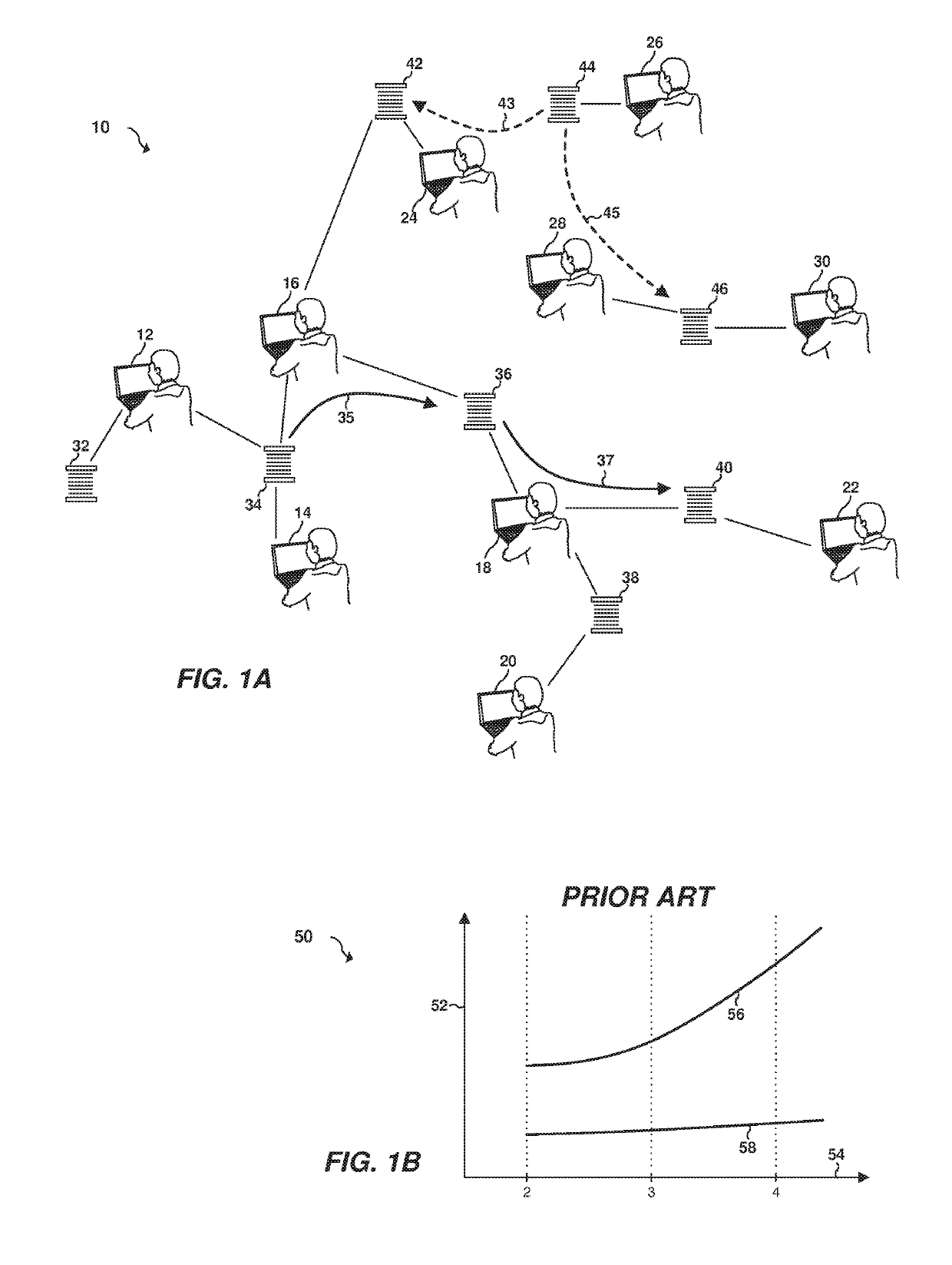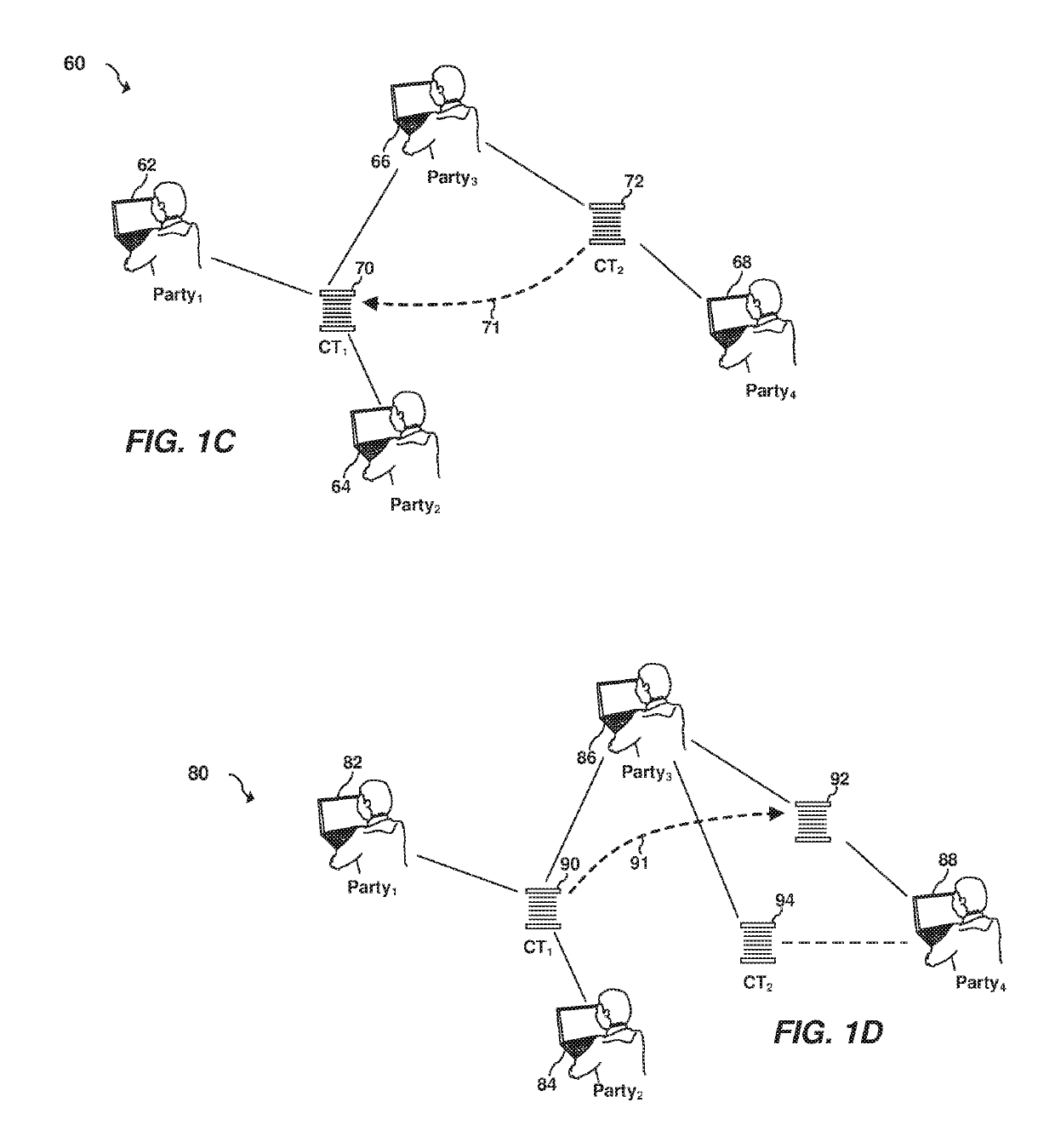The former often involves multiple communications introducing substantial delays into the process and introduces a plausible deniability for all parties which leads to substantial uncertainty, rechecking, re-verifying and the like.
Finally, each party assembles their own potentially contradictory facts leading to massive
confusion and finger-pointing.
The latter, also leads to a situation of plausible deniability and every party having to trust every relaying party.
For example, if person A trusts person B and person B trusts person C, then person A can trust person C. However, there are problems associated with static chains of trust as applied to a confidential
collaboration.
This severely limits the applicability of this technique to widespread commerce.
This makes it impractical to use except under very specialized conditions.
A
pharmacy cannot trust every patient it encounters to forward a prescription from a doctor to the pharmacy without tampering.
While this might not be a high risk for some prescriptions, it might be a high risk for other prescriptions involving highly controlled prescriptions such as DEA Schedule II Drugs, which include opiates and narcotics.
The
biggest problem with certified mail is that the content is not certified.
However, it is also well appreciated that the current state of the art does not work well for confidential transactions.
While these new
blockchain confidentiality features will allow hitherto off-chain private transactions to move on-chain this capability is not sufficient in and of itself to enable certified communication and collaboration capabilities like confidential dynamic
chain of trust.
This is how a severe form of trust recentralization occurs, even if utilizing a decentralized technology like a blockchain.
One downside of smart contracts is that they become exponentially harder to debug as they get more complex.
However, there is no (currently practical) possibility of overcoming this problem for general smart contracts without severe compromises.
The inability to perform confidential validations is a key limitation of blockchains known in the prior art.
Blockchains known in the prior art are unable to scale to the sizes of the confidential fat twin.
Readers and commenters will not be able to add, modify or delete sections or add other writers, readers or commenters.
However, recipients only receive anti-spam-payouts if they have an on-chain identity.
These are integrated VAP services and are not-separable from the validation service.
However, this structure by itself does not solve other blockchain including scale rate and the problem of orphaned blocks.
The downside of this approach is that it is currently viable for only relatively simple validations and will not allow for more sophisticated validations thus limiting the type and degree of certified operations.
Because the governor cannot read this content, the governor cannot do any validation on this content.
Because SACH is on a public blockchain, it may be subject to being guessed through
trial and error since it utilizes a well-known structure.
However, this embodiment requires massive additional trust in the governor relative to the blockchain approach.
Furthermore, the
digital signature approach doesn't support fully on-chain fat twins and thin twins.
Said another way, there is no way for it to support fully decentralized, trustless certified messaging and collaboration which is the long-term goal.
With the
digital signature approach, all parties could not verify it because in general all parties do not have access to TTN1.
Even for a party that does have access to TTN1, it runs into the lack of canonical SAC issue.
With this
digital signature approach, all parties could not verify it because in general all parties do not have access to TTN1.
Even for a party that does have access to TTN1, it runs into the lack of canonical SAC issue.
With this digital signature approach, all parties could not verify it because in general all parties do not have access to TTNT.
Even for a party that does have access to TTN1, it runs into the lack of canonical SAC issue.
Finally, the digital signature approach doesn't support
coin operations which are fundamental to the cryptoeconomic incentives behind certified messaging and collaboration.
 Login to View More
Login to View More  Login to View More
Login to View More 


